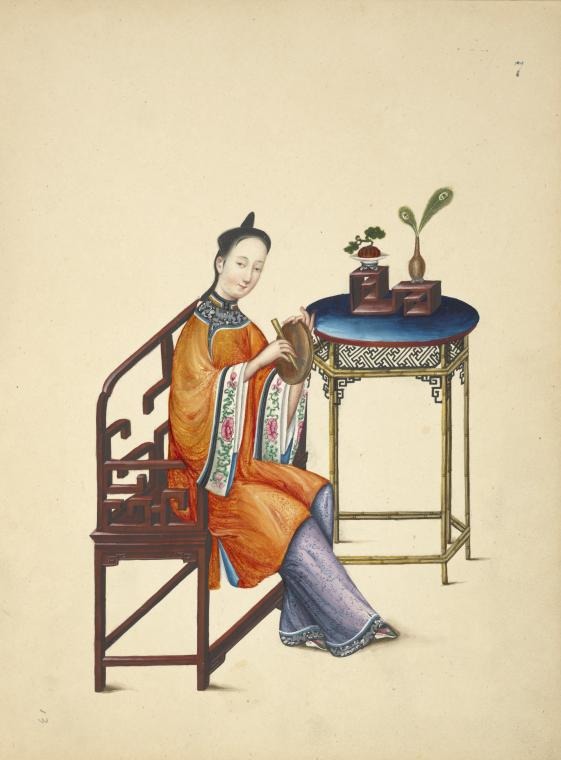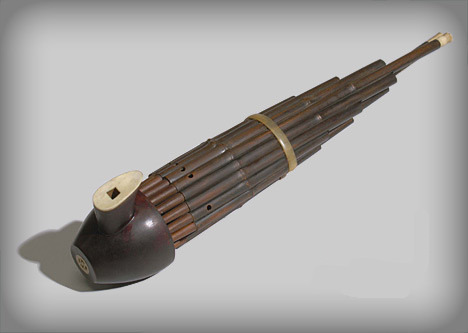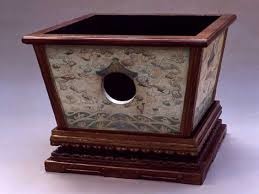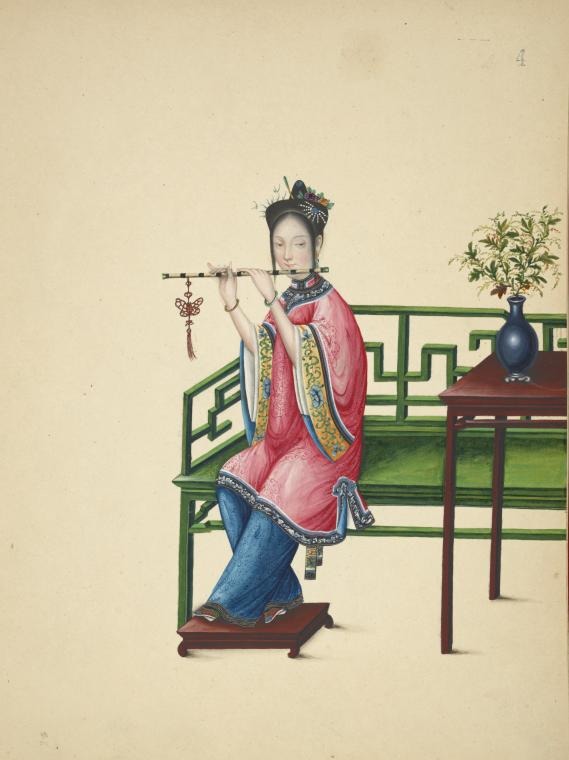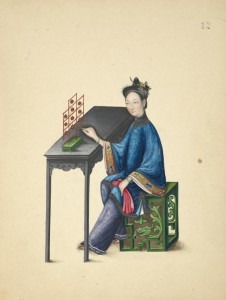
Playing a Shimianluo, a set of tuned gongs in a frame
Musical instruments in China were traditionally classified into 8 groups delineated by the material used in the instrument: Silk, Bamboo, Wood, Stone, Metal, Clay, Gourd and Hide. We will look at selected instruments in six of these groups in this series. The watercolor illustrations used in this series were made in the 1800s.
Metal instruments, like the Wood instruments, are largely percussion instruments. They include bronze bells, cymbals, and gongs.
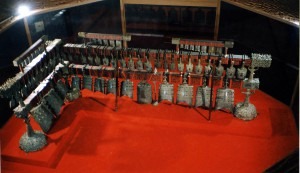
Bianzhong of the Marquis Yi of Zeng at the Hubei Museum
The most impressive of the bronze bells are the Bianzhong, a set of up to 65 tuned bells hung on a rack and played with hammers and long poles. One of the largest sets was unearthed in China and dates from 433 BC. The lightest bell weighs 2 kilos and the heaviest over 200 kilos.
The Bianzhong of Marquis Yi of Zeng dates from the Warring States Period and along with the metal bells, also includes clay bells.
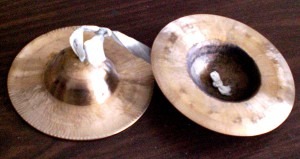
Small Cymbals
Bianzhong Chime Bell Solo (Hubei Song and Dance Ensemble; Peng Xiancheng – Conductor)
The shape of the bells is different than western bells: they are oval, with a cutaway profile at the bottom. In addition the bells are also covered with studs, placed around the instrument in 4 groups of 9. Each bell can produce 2 tones, depending on where it is struck. The bells are held in racks and are struck with hammers or long pieces of wood, for the larger bells.
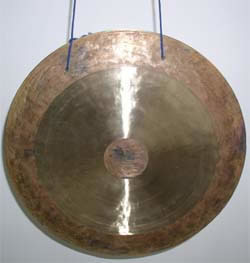
large thin gong
The most portable, and perhaps the most audible of the metal instruments are cymbals: two metal circles clashed together to provide an accent. The flat circles have a central boss and a hole where the handles are attached. These cymbals come in many sizes and provide a noisy background sound. They can be clashed together or hit with a stick.
An: Squabbling Ducks (Li Min-xiong – cymbals)
Gongs, which are also large metal plates, have a very different sound. They are not flat like cymbals, but are arched and many have an edge. Their size determines their pitch: high or low. The thickness of the metal also determines their sound: a very thin gong seems to shimmer with sound where a thicker gong has a very focused sound. The instruments are suspended from their edges – small ones can be held in the hand whereas larger ones need to be held in a stand.
Smaller gongs can have a surprising effect – when they are struck, the pitch immediately changes – some gongs have dropping tones and others have rising tones. In Chinese opera, for instance, a larger gong with a descending tone used to announce the entrance of major players, of men, and to identify points of drama and consequence. The smaller gong with a rising tone is used to announce the entry of women, of lesser players, and to identify points of humor.
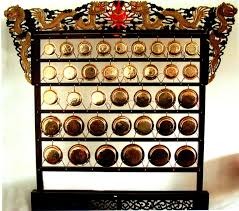
Cloud Gong
Zhoushan luo-gu
Different sized of gongs can also be grouped in a frame and are then called cloud gongs
A piece that combines many of the metal instruments is Lantern Festival Celebration, which comes from the folk music of Zhejiang Province, south of Shanghai. This piece uses 19 percussion instruments, including 3 drums of different sizes, a set of 5 gongs, a set of 3 large gongs, 3 sizes of cymbals, and a slit drum, among others.
Lantern Festival Celebration (Shanghai Philharmonic Orchestra)
The metal instruments provide a bright side to the percussion instruments. The variety of sizes that they come in means that there’s always a place that they can fill in the music, be it as an exclamation point or as a slow rolling thunder in the background.
Next time: Gourd instruments

